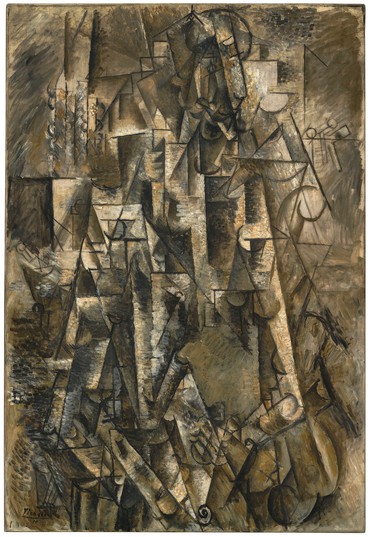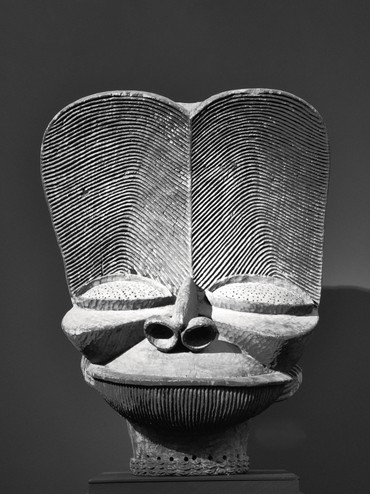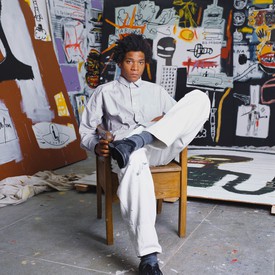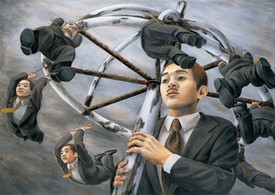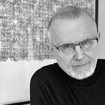
Charles Haxthausen is Robert Sterling Clark Professor of Art History, Emeritus, at Williams College and currently Distinguished Scholar at the Leonard A. Lauder Research Center for Modern Art at New York’s Metropolitan Museum of Art. He is working on a book reassessing Paul Klee’s position within the early-twentieth-century European avant-garde.
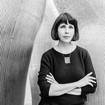
Luise Mahler is an art historian specializing in modern art and its criticism. Her current project, a monographic book study, compares the different Cubisms that emerged from the German-language writings of such figures as Carl Einstein and Daniel-Henry Kahnweiler with those of their European contemporaries, Vincenc Kramář among them. Photo: annako, Berlin
Luise Mahler Carl Einstein has figured extensively in your scholarship and teaching over the past decades. How did translating him into English come to be your project? I’m curious about the story behind your new book.
Charles HaxthausenThis project grew out of my research on early-twentieth-century German art criticism, an interest of mine that dates back to the mid-1980s. I came to see the most interesting criticism of that period as virtually an art form in itself, at times driven by its own paradigms as much as or more than by the art that was its object. Einstein is arguably the most trenchant example of this. His art criticism goes well beyond mere commentary or judgment, it offers a version of the world, a decidedly utopian version, that invests visual art with an extraordinary power to fundamentally transform human subjectivity and our construction of the real.
LMAnd yet, despite the radicalism of his thinking, in the Anglophone world Einstein remains underexplored as both an eyewitness to and a participant in the European avant-garde. After the end of World War I, he joined the leftist faction of Berlin Dada; later, in Paris, with Georges Bataille and Michel Leiris, he launched the short-lived but transformative monthly journal Documents (1929–30). Although he’s one of the foremost early interpreters of African art, Cubism, Expressionism, and Surrealism, his criticism has been primarily addressed, as you point out, by literary scholars rather than art historians; with a few exceptions, his theoretical project is uninvestigated in relation to the art that he wrote about. Negerplastik [Negro sculpture], from 1915, is the most widely known of his books; his texts on Cubism and Pablo Picasso, both published in varying versions in the three successive editions of his book The Art of the 20th Century, first issued in 1926, on the other hand, are much less studied. Finally, Einstein’s prescient late works—Georges Braque (1934), The Fabrication of Fictions (1935), and the unfinished “Handbook of Art” project (mid-to-late 1930s)—offer insight into his mature art theory and are especially relevant today.
What he demanded of art was nothing less than a radical transformation of human visuality, of human subjectivity.
Charles Haxthausen
CHAs a critic, Einstein is somewhat of a paradox. He was a formalist—he believed that a “revolutionary utopia” could be achieved by “a change in artistic form”—but a formalist of a different ilk than, say, Roger Fry or Clement Greenberg. As a critic he had little to say about art’s aesthetic dimension—he thought such pleasures had a pernicious, numbing effect. What he demanded of art was nothing less than a radical transformation of human visuality, of human subjectivity. Language for him was merely a fixed system of signs; visual art could be truer to the flux of reality and therefore harbored the potential for a continual refiguration of our image of the real. In the third edition of The Art of the 20th Century Einstein succinctly summed up this position: “In the act of looking one changes people and the world.”1 He began to articulate this idea as early as 1914, in his theoretical essay “Totality,” which is included in my book. “Art determines seeing (‘Sehen’) in general,” he wrote; “the artist determines our common mental images of the visual world. Hence it is art’s task to organize them.”2 Einstein’s strict distinction between the German gerund “Sehen,” seeing, and “Wahrnehmung,” perception, is fundamental to this principle. “Wahrnehmung,” literally “to take to be true,” implies a passive acceptance of optical sensation, of the visual world as given, ossified by visual habit, while “Sehen” suggests an active encounter with visual phenomena. Einstein insisted that seeing should be proactive, a creative act. He wrote that Picasso’s art “proves that man and the world are being daily invented by human beings.” But a major impediment to this freedom, this continual reinvention of the world, Einstein argued, was the rigidity of language.
LMAn aspect of language that fascinates me is the creation of meaning in different cultural systems. The terminology established and used by German-speaking critics to explain Cubism and Picasso to their audiences is something I address in my own research. In his writings on both subjects, Einstein cultivated a prose style marked by constant rephrasing, which can seem repetitive. But these redundancies or “variations” in Einstein’s texts, as you explain succinctly in chapter seven of your book, are indicative of his deep-seated conviction about the inadequacy of language in rendering descriptions of artworks or, for that matter, of any visual phenomenon.
CHThis is a second paradox in Einstein’s writing: he is an art critic who is skeptical about language’s capacity to describe art. He saw a “hopeless chasm between discourse and image,” a position that certainly poses a challenge to someone writing art criticism!3 This is why he rarely attempted to describe or analyze a work of art. Especially in his writing on Cubism and Picasso, I see him using repetition and variation to relativize any verbal account.
LMBringing Einstein into the conversation about Cubism and Picasso also relativizes the dominant Anglophone discourse on both subjects. The terms—we could call them key words—chosen by different critics in Europe and elsewhere can give us clues as to what was at stake in discussions of Cubism, and those stakes can vary enormously. The contrasts between Einstein’s and, for example, Daniel-Henry Kahnweiler’s or Maurice Raynal’s vocabularies allow for diverse Cubisms to emerge from their respective writings. This in turn raises important questions about the historiography of Cubism.
CHEinstein’s most important writing on Cubism—his chapter in The Art of the 20th Century, which he revised and expanded in each successive edition—has been completely ignored by Anglophone scholars of Cubism, I assume because it has not been translated into English and only recently into French. Given his friendship with Kahnweiler, Picasso, Juan Gris, Fernand Léger, and Georges Braque (to whom he was especially close), this is a serious omission. I believe that most early critics, whatever their merits and differences, could be said to have “tamed” Cubism, making it less daunting by arguing that ultimately it was a “realist” art, that it could be reconciled with the familiar images in our minds—Kahnweiler called them “memory images.” Einstein, on the other hand, argued that Cubism’s greatest achievement was that it destroyed our memory images. Although his interpretation has its blind spots and may be flawed as an explanatory model, it is arguably the only early writing on this art that does justice to the radical implications of Cubism as painting that has the potential to alter not only our conception of art but our intuition of the visual world. He fervently believed that Cubism could be a model for refiguring our own seeing by impressing upon us that it can be an open process, a creative act.
LMBesides being a major early interpreter of Cubism and Picasso, Einstein is rightly considered a groundbreaking author on African art. As one of the first European critics to address African art, he afforded it a central place in art criticism and history. Your book includes the full texts of both of his books on African sculpture.
CHYes, I consider these texts essential within Einstein’s corpus. Negerplastik was the first book in any language devoted to African sculpture as art. Einstein knew little about African art when he wrote it; he knew a great deal more when he wrote his second book on the subject, Afrikanische Plastik [African sculpture], which followed six years later and is much less well known. In the intervening years Einstein had immersed himself in the ethnographic literature and in the museum collections in Berlin, as well as in Tervuren, Belgium, where he was stationed during World War I. Consequently it is a very different book. His aim, he wrote, was to introduce the art of Africa into art-historical discourse—a “revolutionary project,” as one Africanist art historian has characterized it.4
One of the fascinating things about Einstein is how his study of African art and culture began, in the late 1920s, to shape his interpretation of contemporary European art, notably that of Picasso, Braque, Paul Klee, and the Surrealists. He believed that the gap between the European avant-garde art he championed and the art practices of indigenous and archaic cultures had narrowed. The most vivid example of this shift is the text on Picasso from the third edition of The Art of the 20th Century, in which Einstein “surrealized” Picasso. With the chapter on Cubism, of which it formed the largest component, this text had undergone major revisions. Picasso’s art, even in its Cubist phase, Einstein now interpreted as generated by visions and hallucinations, a form of possession against which Picasso sought to protect himself by means of what Einstein called “tectonic forms.” He described the grotesque figures in certain paintings of 1928, such as the Painter and Model in the Museum of Modern Art, New York, as “creatures of a mythology of forms.” Art was now partaking of a process he called the “primitivization of existence,” a phenomenon he identified with a return to a collective, mythic worldview. This was his most passionate hope, that modern art could create a collective visuality out of which a collective politics would emerge; he called modern art “a prophecy of what is to come.” Needless to say, this did not end well.
LMEinstein became disillusioned with art and art history as a discipline around the time his last publication on art appeared, the book on Braque, of which your book includes two chapters.
CHYes, it was while Einstein was at work on that book that his faith in the European avant-garde and his critical project collapsed. He gave vent to that disillusionment in his long, rambling book manuscript The Fabrication of Fictions, unpublished in his lifetime—excerpts from it make up the final chapter of my book. It is a searing critique of the avant-garde, himself included, which he saw as a privileged, solipsistic elite striving to set itself above the masses.
Einstein’s rejection of the avant-garde in which he had placed utopian hopes is one of the things that makes his life such a poignant narrative, even a tragedy.
Charles Haxthausen
LMIt’s quite an abrupt break! Of the modern experience he now wrote that “modernity strips art history of all meaning.”
CHEinstein’s rejection of the avant-garde in which he had placed utopian hopes is one of the things that makes his life such a poignant narrative, even a tragedy. In the summer of 1936 he set aside art criticism and left Paris to take up arms with an anarcho-syndicalist militia in the Spanish Civil War. He wrote to Kahnweiler at the time, “Nowadays the rifle is necessary to make up for the cowardice of the pen.”5 In Spain, fighting alongside workers and peasants, he finally achieved the experience of the collective that he had sought through art, but now art had no role in it. In a late interview he dismissed art’s relevance in such a time of crisis: “To make art today is basically a pretext for avoiding danger.”6
LMThe breadth of his intellectual interests, his assertive split from the conventions of art history, and the dramatic arc of his personal life all attest to the extraordinary figure he was. I want to end by asking what can be gained by reading Einstein today?
CHThe first thing I would say is that Einstein was arguably the most brilliant and original thinker among European art critics of his generation, and in a time of particular ferment. Reading him fills a gap in our knowledge of this remarkable era and opens up alternative ways of looking at modernism. But there’s more. In the 1930s his work took a radical turn, already evident in Georges Braque. There he mounts an acerbic critique of the practice of art history, charging art historians with aestheticizing, domesticating, and normalizing the artwork, reducing art’s history to a formalist narrative of technical progress. As a corrective he calls for a “sociology or ethnology of art,” approaching it as “a living and magical medium.”7
He built and expanded on this vision in his notes for the “Handbook of Art.” Even in its fragmentary existing form, the “Handbook” is a radical reimagining of art history. Intended to comprise five volumes, it was a massive project, for which he left hundreds of pages of notes, including an extended prospectus for a history of world art that I have translated elsewhere.8 Yet the “Handbook” remains largely unknown to all but Einstein specialists. His focus was the evolving and shifting functions of art in human culture throughout history. The concept was not only global and panhistorical in scope, it encompassed the full range of human image-making, including, for example, children’s drawings, “the poetic activity of dreams,” and “the mass of so-called worthless artworks.” Western art, with its exaltation of the individual creator and of formal progress, was to be but a blip in this vast narrative; throughout most of history, image production had been an anonymous, collective enterprise. For that reason an art history centered on masterpieces and individual genius, Einstein argued, was an “idealizing falsification of historical events,” a “sociological fraud.”9 Truly to know art one must know it in the totality of its social and historical manifestations. For me Einstein’s late writings are among his most exciting and most topical for today. His radical remapping of the history of art forms is an exhilarating coda to the life of this extraordinary twentieth-century intellectual.
Carl Einstein, A Mythology of Forms: Selected Writings on Art, ed., trans., and introduced by Charles W. Haxthausen (Chicago: University of Chicago Press, 2019).
1Einstein, Die Kunst des 20.Jahrhunderts, 3rd ed., 1931, quoted in ibid., p. 15.
2Einstein, “Totality,” 1914/16, trans. in ibid., p. 26.
3Einstein, Georges Braque, 1934, trans. in ibid., p. 297.
4Zoë S. Strother, “Looking for Africa in Carl Einstein’s Negerplastik,” African Arts 46, no. 4 (2013), p. 14.
5Einstein, letter to Daniel-Henry Kahnweiler, January 6, 1939, quoted by Haxthausen in A Mythology of Forms, p. 11.
6Einstein, in Sebastiá Gasch, “Einige sensationelle Erklärungen von Carl Einstein: Miró und Dalí—Revolutionäre Kunst—die Rolle der Intellektuellen,” in Einstein, Werke Band 3: 1929–1940, ed. Hermann Haarmann and Klaus Siebenhaar (Berlin: Fannei & Walz, 1996), p. 643, trans. and quoted by Haxthausen in A Mythology of Forms, p. 3.
7Einstein, Georges Braque, trans. in A Mythology of Forms, p. 299.
8Einstein, “Handbook of Art,” trans. Haxthausen, in Anselm Franke and Tom Holert, Neolithic Childhood: Art in a False Present, c. 1930, exh. cat. (Berlin: Haus der Kulturen der Welt; Zurich: Diaphanes, 2018), pp. 22–33, with commentary on pp. 129–32.
9Ibid., pp. 23, 25.

